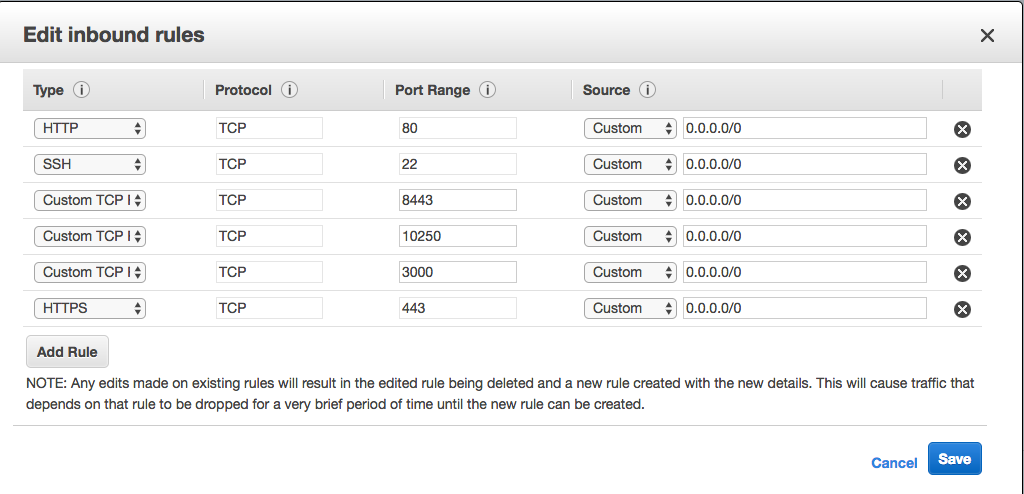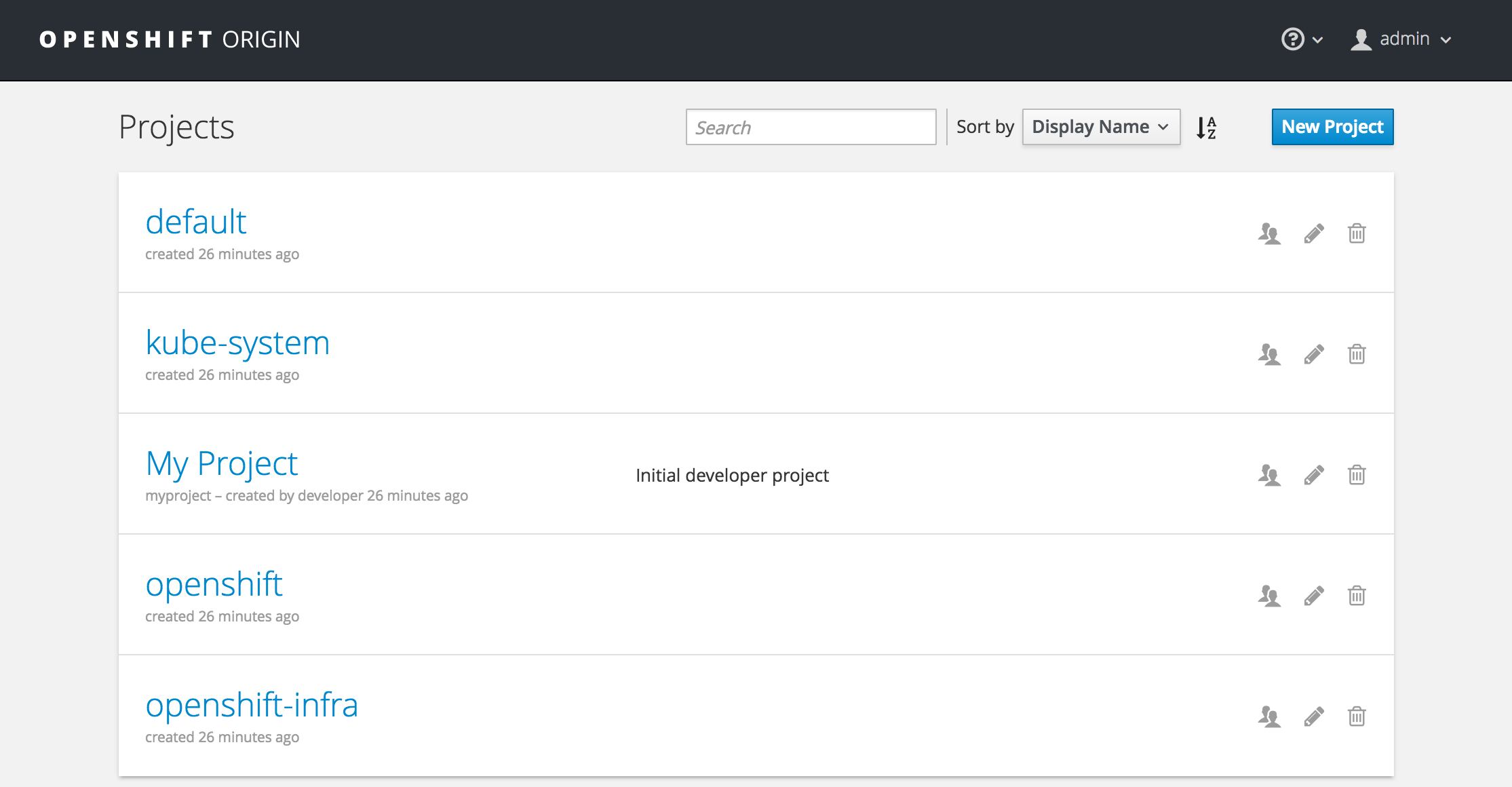Software and Systems How-To's, Tutorials, Demos, Notes
How to Install OpenShift Origin in one node in AWS for Development Purposes
Assumptions:
- You have an AWS account
- You launched an instance using CentOS 7 (x86_64) - with Updates HVM. https://aws.amazon.com/marketplace/pp/B00O7WM7QW
- You have allocated an elastic IP, which we call <elastic-ip> moving forward
- You have associated <elastic-ip> to your running instance.
- You need to be root to install.
Add the following entry to the security group named “CentOS 7 (x86_64) - with Updates HVM…”

## Install oc client
```bash
curl -L https://github.com/openshift/origin/releases/download/v1.5.1/openshift-origin-client-tools-v1.5.1-7b451fc-linux-64bit.tar.gz -o oc.tar.gz
tar -xzvf oc.tar.gz
mv openshift-origin-client-tools-v1.5.1-7b451fc-linux-64bit/oc /usr/local/bin/
Add /usr/local/bin to root’s PATH. Edit /root/.bashrc and add the following line:
export PATH=$PATH:/usr/local/bin
Source the file /root/.bashrc
source /root/.bashrc
Install Firewalld if not already installed
yum install -y firewalld
Install git if not already installed
yum install -y git
Install docker
yum install -y docker
- Edit the file /etc/sysconfig/docker and add the line
INSECURE_REGISTRY='--insecure-registry 172.30.0.0/16'
- restart docker
systemctl restart docker
Configure firewalld
- Run the command below and get the IP
[root@openshift sysconfig]# docker network inspect -f "" bridge
172.17.0.0/16
- Use the IP return above for the below commands:
firewall-cmd --permanent --new-zone dockerc
firewall-cmd --permanent --zone dockerc --add-source 172.17.0.0/16
firewall-cmd --permanent --zone dockerc --add-port 53/udp
firewall-cmd --permanent --zone dockerc --add-port 8053/udp
firewall-cmd --reload
- Run the addtional commands below to open the ports from outside the VM
firewall-cmd --permanent --zone public --add-port 8443/tcp
firewall-cmd --permanent --zone public --add-port 80/tcp
firewall-cmd --permanent --zone public --add-port 443/tcp
firewall-cmd --permanent --zone public --add-port 10250/tcp
firewall-cmd --reload
Install OpenShift
- Create directory /var/lib/origin/openshift.local.data to hold etcd data.
sudo mkdir -p /var/lib/origin/openshift.local.data
*Important: Substitute your ip address when you see
[root@openshift sysconfig]# oc cluster up \
--public-hostname=<elastic ip> --routing-suffix=<elastic ip>.nip.io \
--host-data-dir=/var/lib/origin/openshift.local.data \
--metrics=true
- You will get an output similar to the below
-- Checking OpenShift client ... OK
-- Checking Docker client ... OK
-- Checking Docker version ... OK
-- Checking for existing OpenShift container ...
Deleted existing OpenShift container
-- Checking for openshift/origin:v1.5.1 image ... OK
-- Checking Docker daemon configuration ... OK
-- Checking for available ports ... OK
-- Checking type of volume mount ...
Using nsenter mounter for OpenShift volumes
-- Creating host directories ... OK
-- Finding server IP ...
Using <elastic ip> as the server IP
-- Starting OpenShift container ...
Creating initial OpenShift configuration
Starting OpenShift using container 'origin'
Waiting for API server to start listening
OpenShift server started
-- Adding default OAuthClient redirect URIs ... OK
-- Installing registry ... OK
-- Installing router ... OK
-- Installing metrics ... OK
-- Importing image streams ... OK
-- Importing templates ... OK
-- Login to server ... OK
-- Creating initial project "myproject" ... OK
-- Removing temporary directory ... OK
-- Checking container networking ... OK
-- Server Information ...
OpenShift server started.
The server is accessible via web console at:
https://<elastic ip>:8443
The metrics service is available at:
https://metrics-openshift-infra.<elastic ip>.xip.io
You are logged in as:
User: developer
Password: developer
To login as administrator:
oc login -u system:admin
- Add admin user to admin role so that all projects will be visible in the web console.
oc adm policy add-cluster-role-to-user cluster-admin admin
- Navigate to the web console at https://<elastic ip>:8443 and login with the credentials
username: admin
password: admin
You should be able to see this:

Congratulations! OpenShift Origin is up and running!
Written on July 28th, 2017 by Bobby CorpusFeel free to share!